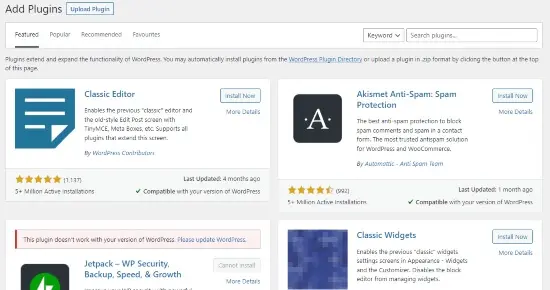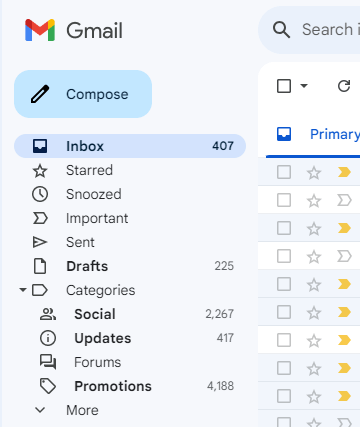Are you interested in spreading the word of Christ but unsure of how to start a Christian blog?
Don’t worry, starting a Christian blog is easier than you think.
I’ll show you 18 simple steps to create your own Christian blog. You’ll learn how to decide what to write about and how to help more people find your posts.
By the time we’re done, you’ll know exactly how to start your blog in 20 minutes.
You’ll be ready to share God’s message on your very own platform.
So, if you’re ready to share your faith through writing, let’s look at how to start your own biblical blog now!
Key Takeaways
- Defining your niche and target audience is crucial when starting a Christian blog, as it helps you create content that resonates deeply with your intended readership.
- Choosing the right blog name and domain is important for creating a strong brand identity and making it easy for readers to recognize and remember your site.
- WordPress.org combined with Bluehost is an excellent choice for new bloggers looking to start a Christian blog, offering full control, customization options, affordability, and SEO-friendliness.
- Creating essential pages such as About Me/Us, Contact, Privacy Policy, and Disclaimer pages help establish trust with your audience while logo design adds visual appeal.
An 18 Step-by-Step Guide to Starting a Christian Blog
This page have some affiliate links. In other words, if you buy from my links, I may get a commission. And some of the images were sources from Unsplash+ (Karoline Gabrows, Sara Kurfess, Ben Iwara, Glenn Carsten-Peters).
In this step-by-step guide, we will walk you through the process of starting a Christian blog, from defining your niche and target audience to choosing a domain name, setting up WordPress, optimizing for a visual search engine like Pinterest, and monetizing your blog.
Ready to start a Christian blog?
Step 1 – Seeking Spiritual Guidance And Defining Your Niche
Starting a Christian blog is more than just writing.
It’s about seeking spiritual guidance and finding your niche.
This process is essential for creating a space where your faith and words come together, offering inspiration and connection to your readers.
So, before we jump into the practicalities, let’s talk about the heart of the matter:
🙏 Seeking Spiritual Guidance: A Heart-to-Heart with God
This is like having a heart-to-heart with God about your blogging journey.
- Prayer: Your blogging journey should start on your knees. It’s all about asking God for guidance, clarity, and wisdom. Pray for your blog to be a tool in His hands.
- Bible Reading: Dive into the Word! Scriptures can offer incredible insights and confirmations about the direction of your blog. A verse that always speaks to me during these times is Proverbs 3:6, “In all your ways acknowledge Him, and He shall direct your paths
- Listening: After you’ve poured out your heart, take time to listen. God’s whispers often come in quiet moments.
- Journaling: Keep a journal handy. Jot down any ideas, scriptures, or inspirations that come to you during this time.
Which brings me to this.
🔍Defining Your Niche: Finding Your Spot in the Blogosphere
A niche is more than just a topic; it’s the intersection where your passion and purpose meet the needs of your audience. Let’s break it down:
- Passion and Expertise: What topics in Christianity are you most passionate about? It could be anything from biblical studies to Christian parenting. Your niche should reflect what you love and know.
- Target Audience: Who are you talking to? Young adults? Parents? Seekers? Knowing your audience helps tailor your content to their needs
- Unique Angle: What makes your blog different? Maybe it’s your life experiences or a particular approach to faith topics. Find that unique angle that sets you apart.
| Steps for Defining Your Niche | Description |
| Identify Your Passion | Think about topics in Christianity that excite you. |
| Know Your Audience | Determine who will benefit most from your blog. |
| Find Your Unique Angle | What unique perspective can you offer? |
Remember, your blog is a journey, not just a destination.
By seeking God’s guidance and thoughtfully defining your niche, you’re setting the stage for a blog that resonates with your audience and fulfills your calling.
Proverbs 3:6 reminds us to seek His guidance in all things, and that includes the journey of blogging.
So, take a deep breath, pray, and step into this exciting adventure with faith and confidence!
Christian Blog Ideas
Diving into the realm of Christian blogging, it’s crucial to have a bevy of topics at your disposal that can captivate your audience and help grow your blog’s reach.
Here are some engaging Christian blog ideas you might consider:
- Bible Studies: Sharing weekly studies on different books of the Bible.
- Devotionals: Daily posts offering spiritual insight and encouragement.
- Finance Blog: Unblock spiritual roadblocks affecting financial prosperity.
- Mom Blog: Share the journey of Christian motherhood, impart wisdom, and create a community for moms who love Christ.
- Craft Blog: Showcase Christian-centered DIY projects or crafts for children’s bible studies.
- Hobby Blog: Connect faith with fun — how Christianity influences your interests, hobbies or passions.
- Christian Marriage: Offer advice on maintaining monogamy, and dealing with adultery issues based on biblical principles.
- Christian Dating: Provide guidance for navigating love in line with Christian values.
- Christian Addiction Recovery: Share testimonies, resources, and advice to aid recovery through faith.
- Parents of Special Needs Children: Create a platform where parents can find strength and support in their faith during challenging times.
- Modern Homemaking: Fuse traditional home management wisdom with modern practical tips from a biblical perspective.
- Parenting And Marriage: Discuss how to maintain a Christ-centered family life amidst the everyday hustle and bustle.
- Christian Business Names Ideas: Inspire fellow Christians looking to start their own businesses with creative naming options rooted in scripture.
Step 2- Choosing Your Blog Name and Domain
Picking the right blog name and domain is like laying a solid foundation for your Christian blog.
It’s crucial to align your blog name with your niche, target audience, and brand identity.
This will not only make it easy for potential readers to recognize your site but also remember it.
Keep in mind that the best website names are usually short, catchy, simple, unique yet full of character—a blend that projects what your faith-based content is all about seamlessly.
Using platforms such as Namesilo can help you secure a domain matching your desired blog name affordably.
This helps to ensure every piece fits together harmoniously for an effective digital representation of your Christian values on the web space.
Step 3 – Selecting a Blogging Platform and Hosting
Starting a Christian blog involves making a critical choice for your blogging platform and hosting service.
This step is essential as it impacts everything from your website’s performance to how it appears to your target audience.
I recommend WordPress.org and Bluehost as a robust combination for new bloggers, and here’s why.
| Criteria | WordPress.org | Bluehost |
|---|---|---|
| Control | Full control over every aspect of the site | Your data is protected and managed |
| Customization | Thousands of free and premium themes available | One-click WordPress installation and high compatibility |
| Cost | Free to use, but involves cost for hosting | Affordable plans starting from $2.95/month |
| Support | Extensive online community and documentation | 24/7 customer service |
| SEO | Highly SEO-friendly | Integrated with Cloudflare CDN for improved site speed |
These two platforms provide an uncomplicated and affordable route to getting your Christian blog off the ground.
With God’s guidance, you’ll create a blog that serves as a beacon of light and inspiration for your readers.
Why Choose Bluehost?
When creating a Christian blog, you want a webhost that is reliable, fast and cost-effective.
And Bluehost meets all that.
What’s more. It is widely regarded as one of the best hosting providers for bloggers, and it is recommended by WordPress.
With their managed WordPress hosting option, you can easily set up your blog on the popular WordPress platform.
Plus, they provide a free domain name when you sign up on the Choice Plus plan, saving you money on purchasing one separately.
Bluehost also offers features specifically tailored to bloggers, such as easy installation and setup of WordPress themes and plugins.
Their user-friendly interface makes it simple for beginners to navigate and customize their blogs without any technical expertise required.
Here’s what others think:
- Bluehost offers affordable hosting plans that are suitable for bloggers on a budget (Talkbitz)
- It offers one-click WordPress installation, making it convenient for new bloggers to get started quickly(CrazyEgg)
| Plan | Pricing | Hosting Features |
|---|---|---|
| BASIC | $2.95/mo* (Save 40%) | 10 GB SSD Storage, 1 Website, Free Domain 1st Year, Custom WP Themes |
| CHOICE PLUS | $5.45/mo* (Save 50%) | 40 GB SSD Storage, Free CDN, Unlimited Websites, Free Domain 1st Year, Custom WP Themes |
| ONLINE STORE | $9.95/mo* (Save 35%) | 100 GB SSD Storage, Free CDN, Unlimited Websites, Free Domain 1st Year, Custom WP Themes, Exclusive Store Theme, Store Analytics |
| PRO | $13.95/mo* (Save 20%) | 100 GB SSD Storage, Free CDN, Unlimited Websites, Free Domain 1st Year, Free Dedicated IP, Custom WP Themes |
Table A – An overview of Bluehost pricing table for starting a Christian blog. For more details, check out the Bluehost pricing card here.
Step 4 – Installing and Setting up WordPress
Setting up your WordPress website is an exciting step in starting your Christian blog.
With WordPress being the most popular blogging platform, it offers creative freedom and control over your site.
Before I get deep into this.
Here’s a snapshot to help you install and set up WordPress:
- Choose a hosting provider:
Selecting a reliable hosting provider is crucial for the performance and security of your blog. Bluehost is recommended for its affordability and excellent customer support. - Sign up for a hosting plan:
Visit Bluehost’s website and choose a suitable hosting plan that meets your needs. - Register your domain name:
If you haven’t already, register a domain name that aligns with your blog’s niche and target audience. Namesilo is another popular option for domain registration. - Install WordPress:
After signing up with Bluehost, you’ll have access to their one-click WordPress installation feature. Follow the prompts to install WordPress on your domain. - Set up basic settings:
Once WordPress is installed, log in to your admin dashboard by navigating to www.yourdomain.com/wp-admin/. From there, go to Settings > General and enter your site title, tagline, time zone, and other basic information. - Choose a theme:
A theme determines the appearance of your blog. Browse through the available free or premium themes within the Appearance section of your dashboard or consider purchasing a theme from reputable sources like Divi or Thrive Theme Builder. - Install essential plugins:
Plugins add functionality to your blog. Install AllInOneSEO for optimizing your content, WooCommerce if you plan on selling products, and UpDraft Plus for backing your website. - Create essential pages & logo: Your Christian blog should include essential pages such as About Me/Us, Contact, Privacy Policy, and Disclaimer pages. For logo design or customizations, consider hiring freelance designers on platforms like Fiverr or PromptSmart app.
- Set up Google Analytics:
Tracking your blog’s performance is important. Sign up for a free Google Analytics account and follow the instructions to add the tracking code to your site. - Set up Google Search Console:
To monitor your blog’s presence in search results and identify any SEO issues, create a Google Search Console account and submit your sitemap.
Read this if you want to know How to start a Bluehost WordPress blog in 20 minutes.
Step 5 – Choose a WordPress Theme
When it comes to choosing a WordPress theme for your Christian blog, you want something that not only looks visually appealing but also aligns with the message and purpose of your blog.
A well-designed theme can enhance the user experience, making it easier for readers to navigate through your content.
Look for themes that offer customization options and flexibility to suit your specific needs.
Whether you prefer a clean and minimalist design or a more vibrant layout, consider how the theme showcases images, typography, and overall aesthetics.
Keep in mind that mobile responsiveness is essential as more users access websites from their smartphones or tablets.
Step 6 – Leverage the Power of WordPress Plugins
One of the keys to a successful Christian blog is leveraging the power of WordPress plugins. These handy tools can enhance your website’s functionality, making it more user-friendly and engaging for your readers.
With plugins, you can add features such as social media sharing buttons, contact forms, related posts sections, and even Bible verse displays.
They also offer SEO optimization options that help improve your blog’s visibility in search engine results.
Below are just some of the essential plugins for WordPress blog:
- WP Rocket: This is a powerful plugin to speed up your WordPress site. Fast-loading pages improve user experience, increase your page views, and help with your WordPress SEO. WP Rocket makes it super easy to speed up your website. A great asset for new bloggers who are just starting out.
- All in One SEO (AIOSEO): When it comes to SEO, it’s a whole new ball game. But don’t worry, AIOSEO makes it easier! It’s an awesome plugin that allows you to optimize your blog posts for search engines and social media. A must-have for anyone wanting to get found on Google.
- UpDraftPlus: New or not, every blogger should regularly back up their site. That’s where UpDraftPlus comes in. This plugin makes it simple to back up your blog and restore it. So, if anything ever goes wrong, you can have your site back up and running in no time.
- Akismet: As a blogger, you’ll probably deal with spam comments. They’re annoying, right? Akismet helps you handle them. It checks all comments and filters out the ones that look like spam. So, you can focus on more important things, like writing your next blog post.
- TinyPng: Images can slow down your site. But with TinyPng, you can compress and optimize your images, all while keeping their quality. It’s a fantastic way to keep your site running quickly without sacrificing your blog’s visual appeal.
By utilizing these plugins effectively, you can create a seamless user experience while amplifying the impact of your blog content.
So don’t hesitate to explore the world of WordPress plugins and take advantage of their potential to elevate your Christian blog to new heights.
Step 7 – Create Essential Pages & Logo
Creating essential pages and a logo is a crucial step in starting a Christian blog.
It helps establish your brand identity and provides essential information for your readers.
Essential pages to include:
- Home Page: Your first focus should be the home page. The welcoming hello to your visitors that quickly shows them what your Christian blog is about. A good home page should have a big picture or slider with a main title and a smaller title, a short section that shares more about your blog, a standout button leading to a key page, post, or sign-up form, and helpful links to important content on your site for easy navigation.
- About Me/About Us Page: Introduce yourself or your team, share your mission and vision for the blog, and explain why you started it. This page helps build trust with your readers.
- Contact Page: Provide an easy way for your readers to get in touch with you. Include a contact form or email address, as well as any social media profiles or other means of communication.
- Privacy Policy: This page outlines how you collect, use, and protect personal information on your blog. It shows that you value privacy and helps you comply with data protection regulations. (Here’s a DIY template you can use to protect your business)
- Terms of Service: Clearly state the terms and conditions for using your blog, including copyright policies, disclaimers, and any rules or guidelines you have for comments or user-generated content.
- Logo Design: A well-designed logo adds professionalism to your blog and helps people recognize and remember your brand. You can use a free tool like Canva to create a logo that reflects the essence of your Christian blog.
Step 8 – Setting up Google Analytics
First and foremost, I highly recommend setting up Google Analytics for your Christian blog. It is an essential tool for tracking the success of your website and gaining valuable insights into your audience.
With Google Analytics, you can easily monitor your blog’s traffic, see where your visitors are coming from, and understand which pages or posts are performing the best.
By utilizing this powerful analytics platform, you can make data-driven decisions to improve the user experience on your blog and tailor your content to better meet the needs of your target audience.
Understanding what types of content resonate with your readers will help you create more engaging articles in the future.
One more thing.
Google Analytics allows you to set specific goals for conversions such as newsletter sign-ups or product purchases if you decide to monetize your Christian blog down the road.
Step 9 – Setting up Google Search Console
Setting up Google Search Console is a crucial step in optimizing your Christian blog and reaching a specific audience.
With Google Search Console, you can monitor your website’s performance, track organic search traffic, and identify any issues that may be affecting your site’s visibility in search results.
It allows you to submit a sitemap of your blog to ensure that all of your pages are indexed by Google.
By analyzing the search queries that are driving traffic to your blog, you can tailor your content to better meet the needs of your target audience.
This free tool from Google provides invaluable insights into how users are finding and interacting with your Christian blog, helping you make data-driven decisions for growth and success.
Step 10 – Mapping Out Your Blog Structure
When it comes to starting a Christian blog, mapping out your blog structure is an essential step.
This helps you organize your content and make it easily accessible to your readers.
Now before I reveal the key points, let’s take a step back.
Here are some key points to consider when mapping out your blog structure:
- Define your main categories:
Start by identifying the main topics or categories that align with the purpose of your Christian blog. For example, if you’re focusing on Christian parenting, some of your main categories could be “Parenting Tips,” “Family Devotions,” and “Marriage Advice.” - Create subcategories:
Within each main category, create subcategories to further categorize your content. This allows readers to find specific topics more easily and helps you maintain an organized structure for your blog. For instance, under the main category of “Parenting Tips,” you could have subcategories like “Discipline Strategies” or “Raising Godly Children.” - Consider using tags:
Tags are another way to organize and classify your blog posts. They provide additional context and allow readers to navigate through related content more efficiently. Tags can be used for topics that span across different categories or themes. - Plan a logical navigation menu:
Your navigation menu is crucial for helping readers navigate through your site effortlessly. Arrange the main categories in a logical order that makes sense to users, such as from most general to most specific. - Link-related posts within content:
As you write new blog posts, look for opportunities to link back to relevant older posts within the text. This not only helps with SEO but also encourages readers to explore more of your content.
Step 11 – Setting Up Social Media Profiles
Setting up social media profiles is an essential step in starting a successful Christian blog.
It allows you to connect with your audience, promote your content, and build your online presence.
Here’s a simple guide on how to set up your social media profiles:
- Choose the right platforms:
Determine which social media platforms are most popular among your target audience. Facebook, Instagram, Twitter, and Pinterest are common choices for bloggers. - Create consistent handles:
Use the same username/handle across all platforms to maintain brand consistency. This makes it easier for readers to find and recognize you. - Customize profile information:
Fill out your profile information thoroughly, including a brief bio that describes your blog and what readers can expect from it. Add a link to your blog or website in the appropriate section. - Use professional photos:
Upload a clear and high-quality profile picture that represents you or your blog’s branding well. Also, consider using a relevant cover photo for your profiles. - Engage with others:
Social media is all about building connections and engaging with your audience. Follow other Christian bloggers and interact with their content by liking, commenting, and sharing their posts. - Share valuable content:
Regularly share posts from your blog on social media platforms to drive traffic back to your website. Additionally, curate and share related content that would interest your target audience. - Consistency is key:
Establish a posting schedule for each platform and stick to it as much as possible. Consistent posting helps you stay visible in people’s feeds and builds trust with your audience.
Before I go on.
I suggest you focus on just one social media platform when you start blogging, and here’s why.
Why? Social media is a bit like a party.
Imagine walking into a party with so many people, all talking at the same time. It’s confusing, right?
It’s the same with trying to be on all social platforms at once. It’s hard to keep up and can be quite overwhelming!
Instead, think about going to a smaller party, where you can really get to know people and have meaningful chats.
That’s what focusing on one social platform is like.
You get to really understand the platform, learn what works best, and build strong relationships with your audience there.
You become a real part of the community.
Plus, it’s less work and less stress!
So, choose one platform where most of your target readers hang out, and build a community!
And remember, you’re not stuck there forever. Once you’ve mastered one platform, feel free to check out the others!
Optimizing for Pinterest
Pinterest is a powerful platform for driving traffic to your Christian blog.
To optimize your presence on Pinterest, there are a few key strategies you should implement.
First, set up a Pinterest Business Account to access valuable analytics and advertising options.
Next, make sure your profile and boards are optimized for your niche by using relevant keywords in your descriptions and board titles.
To attract attention on Pinterest.
- Use Rich Pins and validate your Christian blog.
- Optimize your profile and boards with the relevant keywords in your decription (without keyword stuffing).
- It’s crucial to use visually appealing images that can be easily pinned.
- Create eye-catching graphics or use high-quality photos that align with the content of your blog posts.
- I suggest creating a pin with the dimensions of 1000 x 1500 pixels as it will stand out more.
- Label your pin images with relevant keywords.
- Link each image back to the corresponding blog post or page on your website.
If you are interest in generating organic traffic to your blog from Pinterest, then check out Pinteresting Strategies.
This is a great course for anyone who wants to know how to optimize up a business profile, learn Pinterest SEO and apply effective pinning strategies.
Remember, Pinterest success takes time and consistency.
By implementing these optimization techniques and regularly pinning valuable content from your Christian blog, you’ll increase visibility and drive more traffic to your site from this popular social platform.
Step 12- Setting Up Email for Subscribers
One crucial step in starting a successful Christian blog is setting up email forms to capture and nurture subscribers.
Once your blog has been established and has a solid foundation, it’s recommended to start building an email list.
This involves creating a domain email address and using an Email Service Provider (ESP) like Moosend to manage the emails efficiently.
Building and nurturing an engaged email list takes time and effort, but it provides you with a direct line of communication with your audience.
You can share exclusive content, updates on new blog posts, devotionals, or even helpful resources that resonate with their faith journey.
By consistently delivering value through email, you can develop strong relationships with your subscribers while also driving traffic back to your blog for increased engagement.
Step 13 – Writing Engaging Content
Writing engaging content is the heart of any successful Christian blog.
It’s important to remember that your primary goal is to connect with and inspire your readers.
This is crucial to keep their interests and needs in mind when creating your content.
Start by understanding who your target audience is and what topics are most relevant to them.
Consider incorporating Bible studies, devotionals, and personal stories that relate to their spiritual growth.
To make your content more engaging, use a conversational tone that feels relatable and authentic.
Share personal experiences and anecdotes that reflect your own journey of faith.
Don’t be afraid to show vulnerability – it helps build trust with your readers.
Another way to create engaging content is by addressing popular topics within the Christian community or current events from a faith-based perspective.
This allows you to provide valuable insights and guidance on issues that matter most to your audience.
That said, check out my other blog post on What Makes A Good Blog Post as it goes more in depth to improve both user experience and engagement.
However.
It’s important to create content that is focused on specific keywords.
Here’s why.
Writing about certain keywords helps your blog show up better in search engines.
When your blog ranks higher, more people can find it when they search online.
Plus.
You don’t want to work hard on a blog post that no one cares about.
On that note, let talk about.
Targeting High Traffic, Low Competition Opportunities
This is a key strategy for every Christian blog. Here’s why.
There are lots of Christian bloggers and many other websites that might use the same keywords as you.
So, it’s a good idea to find keywords that aren’t used by too many people but still match what your readers are looking for.
Also, you should choose keywords that a lot of people search for every month.
You wouldn’t want to spend a lot of time writing about a keyword that only a few people look up.
If you write about topics that not many others are writing about, you have a better chance of showing up higher in search results.
This means more people might read your blog.
To do this, use tools like SE Ranking or Google Keyword Planner to find popular topics that don’t have a lot of competition.
Hence, keyword research is important. Very. Important.
Also, keep up with what’s new and popular in the Christian community.
This can help you find new topics that others haven’t written much about yet.
So, try to find topics that are interesting to many but not written about by many. This way, your blog can stand out!
Step 14 – SEO Your Blog
If you want Google to notice your Christian blog, then you need to optimize every blog post.
Here’s 6 areas where you must add keywords to your Christian blog.
- Meta Title:
Think of the Meta Title like the name of your blog post. It tells people and search engines what your post is about. Put your keyword early in the title. Make sure it fits well and makes sense. And don’t stuff it with keywords. - Meta Description:
This is a short summary that shows up in search results. It’s like the back of a book that tells you what the story is about. Include your keyword here, but make it sound natural. This doesn’t help with search rank, but it helps people decide to click on your blog. - URL:
The URL is the web address for your blog post. It should be simple and clean. Your keyword can go here too. This makes it easy for search engines and people to know what your post is about. For example, the keyword for this blog is ‘how to start a Christian blog’ is used in this URL you’re reading now. - Header Tags (H1, H2, H3):
Headers are like chapter titles in a book. They help organize your blog post. Your main title is the H1 tag and it should have your keyword. Use H2 and H3 for subheadings. Include keywords where you can, but don’t overdo it. - Body Content (Introduction, Main Content, Summary): Your keyword should be in the first 100 words of your blog. Then, use it a few times (including keyword variations) in the main part of your post. Finally, use it again in the summary at the end. Remember, it should always feel natural.
- Add Keywords to Images:
Search engines can’t see pictures, but they can read the words we give to describe them. So, add your keyword to your image file names and also in the ALT text (a short description of the image). This helps search engines understand what your image is about. Just make sure your keyword fits the image and your post.
And then there is the length of a blog. I’m not going to cover this as it deserves a discussion.
But you can check out this blog on What is the Ideal Length of a Blog Post.
Step 15 – Publishing Your Christian Blog
After putting in all the hard work of creating engaging content for your Christian blog, it’s time to hit that publish button and share your message with the world.
But before you do, make sure to proofread your posts for any grammar or spelling errors.
Utilize tools like Grammarly or Hemingway Editor to ensure your writing is clear and error-free.
It’s also a good idea to add relevant images or graphics to make your blog visually appealing and draw readers in.
Once you’re satisfied with the final product, don’t be afraid to promote your published posts on social media platforms such as Facebook and Twitter, using hashtags related to your niche.
Step 16 – How to Speed up Your Christian Blog
When it comes to running a Christian blog, it’s important to ensure that your site is fast and efficient. Slow loading times can deter visitors and impact your search engine rankings.
Here are some tips to help you speed up your Christian blog:
- Optimize images:
Compressing your images or using a plugin like Smush can significantly reduce file sizes without sacrificing quality. - Minify CSS and JavaScript:
Removing unnecessary spaces, comments, and line breaks from your CSS and JavaScript files can reduce their size and improve load times. Consider using a plugin like WpRocket for this. - Use caching:
Implementing caching techniques like browser caching and server-side caching can store static versions of your site and deliver them quickly to users, reducing the need for repeated requests to the server. - Enable Gzip compression:
Gzip compression compresses files on the server before sending them to visitors’ browsers, reducing their size and speeding up loading times. Most hosting providers offer Gzip compression as a feature. - Reduce HTTP requests:
Each element on your page requires a separate HTTP request to load. Minimizing the number of external scripts, stylesheets, and fonts can decrease the number of requests needed, resulting in faster load times. - Upgrade hosting plan:
If you’re experiencing consistent slow loading times despite optimizing your site, it may be time to consider upgrading your hosting plan. A more powerful hosting solution can handle increased traffic with ease.
🛠️ Advanced Techniques for Site Speed Optimization
For those looking to dive deeper into technical optimizations, consider these advanced techniques:
- Content Delivery Network (CDN): Use a CDN to serve your content from servers close to your users, reducing load times.
- Advanced Caching Mechanisms: Explore options like browser caching and server-side caching for faster content delivery.
- Optimizing CSS and JavaScript: Minimize and combine CSS and JavaScript files to reduce the amount of code that needs to load.
| Optimization Techniques | Benefits |
|---|---|
| Responsive Design | Ensures usability across all devices. |
| Image Optimization | Speeds up page load times. |
| Minimizing HTTP Requests | Reduces server load and response time. |
| Implementing Caching | Provides faster access to returning visitors. |
By focusing on these technical aspects, you’re not just enhancing your blog’s performance; you’re creating a welcoming and efficient space for your readers to connect with your content.
Remember, a fast and user-friendly site keeps readers coming back for more!
Step 17 – How to Grow Your Christian Blog
If you want a thriving Christian blog, you need to stick to plan.
This includes blogging consistently, finding the right keywords, keeping tabs of your blog’s performance and promoting your blog.
Consistency is Key
It is the secret ingredient for a successful Christian blog.
By consistently publishing high-quality content, you build trust with your readers and establish yourself as an authoritative source in your niche.
This means sticking to a regular publishing schedule and delivering on your promises to provide valuable, inspiring, or insightful articles.
But how often should you blog? Here’s my take on how often you should post on a blog.
Consistency also applies to promoting your blog on social media platforms and engaging with your audience regularly.
Remember that it takes time to grow a blog, but by staying consistent, you’ll attract more readers and see the fruits of your labor over time.
So keep showing up.
Keep sharing God’s word through your writing.
And stay committed to consistency for lasting blogging success.
Keep Tabs of Your Blog’s Performance
Tracking and understanding your blog’s performance is crucial.
Yet, often overlooked by bloggers. (So, don’t ignore it.)
But.
Knowing how your blog is doing isn’t just number-crunching.
It’s about smartly shaping your content and strategy.
Let’s dig into how tools like Google Analytics and Google Search Console can be our best friend in this blogging journey.
📊 Why Regular Tracking is Key
Think of your blog as a growing plant.
Just like you need to check on a plant to ensure it’s getting enough water and sunlight, regular checks on your blog’s analytics give you vital insights.
Here’s why it’s a game-changer:
- Understanding Your Audience: Who’s reading your blog? What are they interested in? Analytics give you these answers.
- Measuring Engagement: Find out which posts are hits and which miss the mark. This helps you tailor your content effectively.
- Tracking Growth: Watching those numbers climb over time can be super motivating!
🔍 Navigating Google Analytics
Google Analytics can seem daunting, but it’s really a treasure trove of insights.
One important metric to track is website traffic.
You can use Google Analytics to see how many visits your blog receives, where the traffic comes from, and which pages are the most popular.
This information will help you understand which topics resonate with your readers and can guide future content creation.
Another metric to monitor is engagement.
Look at metrics like average time on page and bounce rate to gauge whether visitors are finding value in your content or quickly leaving.
Here is a quick overview of what key numbers to focus on:
- Pageviews and Sessions: How many times are your posts being read? Are people coming back?
- Bounce Rate: This tells you if visitors stick around or leave quickly. A high bounce rate might mean you need to make your content more engaging.
- Traffic Sources: Where are your readers coming from? Social media, search engines, or direct links?
- Audience Demographics: Get to know your readers’ age, gender, and interests. This helps in creating content that resonates.
📈 Making Sense of the Data
Alright, you’ve got the numbers, but what do they mean?
Here’s how to use that data:
- Spotting Trends: Are certain topics more popular? Do some posts trigger more engagement? Use this info to guide your future content.
- Improving User Experience: High bounce rates? Maybe it’s time to rethink your blog’s layout or speed.
- Refining SEO Strategies: See what search terms bring people to your blog and optimize your content accordingly.
| Key Analytics Metrics | Why They Matter |
|---|---|
| Pageviews & Sessions | Measures the popularity and return visits. |
| Bounce Rate | Indicates if visitors engage or leave quickly. |
| Traffic Sources | Shows where your audience comes from. |
| Audience Demographics | Helps tailor content to reader interests. |
🛠️ Leveraging Google Search Console
Beyond Google Analytics, Google Search Console is a powerful tool for further understanding your blog’s performance, especially from a search engine perspective.
- Search Query Analysis: Discover what search queries are leading people to your blog. This insight is invaluable for tailoring your SEO strategy.
- Site Errors and Indexing: Google Search Console alerts you to any site errors that could affect your ranking and confirms if your content is being correctly indexed.
Here’s how to capitalize on the benefits of Google Search Console:
- Optimize Your Content: Use the search query data to refine the focus of your content and enhance your SEO strategy.
- Fix Technical Issues: Address any site errors or indexing issues to ensure your blog is SEO-friendly and ranks well.
| Google Search Console Insights | Description |
|---|---|
| Search Queries | Identifies terms people use to find your blog. |
| Site Errors and Indexing | Alerts about technical issues affecting SEO. |
| Link Analysis | Tracks who is linking to your site. |
| Click-Through Rate (CTR) | Measures the effectiveness of your search listing. |
Consistently monitoring your blog’s analytics is like having a roadmap for success.
It guides you on what to write, how to improve, and how to connect better with your audience.
Embrace these insights, and watch your blog not just grow, but thrive!
Keep faith, keep blogging, and keep tracking!
SEO Optimization: Fine-Tuning Your Christian Blog for Search Engines
As a blogging beginner, it’s important to understand the significance of building SEO as a foundation for your Christian blog.
It’s all about making your site more attractive to search engines.
Let’s walk through some key tips to enhance your blog’s SEO.
📍 Keyword Placement: The Basics
Keywords help search engines understand what your content is about. Here’s how to place them effectively:
- Meta Titles and Descriptions: These appear in search results. Include your main keyword in both, making sure they accurately describe the content of your post.
- URLs: Keep your URLs short and sweet, embedding your primary keyword.
- Header Tags (H1, H2, H3, etc.): Use these to structure your content. Include keywords in headers, especially H1 and H2, to emphasize the main topics.
📝 Optimizing Body Content
The body of your blog post is where you can naturally incorporate keywords:
- First 100 Words: Include your primary keyword within the first 100 words of your content.
- Throughout the Post: Use both primary and secondary keywords throughout, but keep it natural. Don’t stuff your content with keywords.
🖼️ Images and Alt Text
Images can also be optimized for SEO:
- File Names: Rename your images to reflect the topic of your blog post, including keywords.
- Alt Text: This is used to describe the image. It’s a good place to include keywords, as it helps search engines understand what the image is about.
🔗 Internal and External Links
Links within your blog can improve SEO:
- Internal Links: Link to your own content. This helps search engines crawl your site more effectively and keeps readers engaged.
- External Links: Link to reputable, relevant external sites. This adds credibility to your content.
🚀 Advanced SEO Tips
For those who want to dive deeper:
- Mobile Optimization: Ensure your site is mobile-friendly, as more searches are done on mobile devices.
- Loading Speed: Improve your site’s loading speed. Slow sites can be penalized by search engines.
| SEO Element | Tips for Optimization |
|---|---|
| Meta Titles/Descriptions | Include main keywords, make them engaging. |
| URLs | Short, with the main keyword. |
| Header Tags | Use keywords in H1 and H2 tags. |
| Body Content | Natural keyword use, including variations. |
| Images & Alt Text | Keyword-rich file names and descriptive alt text. |
| Links | Internal links to your content; external links to credible sources. |
Good SEO optimization needs work and patience.
This is important as it can help your Christian blog grow and attract readers.
Readers who are seeking spiritual growth and connection with God
It’s all about using your keywords the right way and making sure your blog is useful and easy for your readers to use.
Keep working on your SEO skills.
You’ll soon notice how it helps your blog get more readers and interaction!
Post in Christian Groups Online
There are many groups and social media pages where you can share your blog.
People in these groups will probably like what you write.
Just make sure it fits the group.
For example, don’t share stuff about parenting in a business group, unless it’s about how parents who work can handle parenting.
So aim to add value to the community by helping folks out.
Guest Posting
One of the most valuable strategies for growing my audience is guest posting.
It’s a great way to connect with other bloggers in the Christian community and share your experiences and insights with their readers.
By writing guest posts on established blogs, you can tap into their existing audience and introduce yourself as an expert in your niche.
This helps drive traffic to your Christian blog.
Build your brand.
And helps build long term partnership with other bloggers.
And these friends can help share and support your blog too
So don’t be afraid to reach out to fellow Christian bloggers and offer to contribute guest posts – it’s a win-win situation for everyone involved!
- Guest posting can help improve your website’s search engine rankings. When you submit guest posts to high-quality sites and they publish them, search engines will pick up the backlinks and count those as votes of authority and confidence for your site. (Zero Gravity Marketing)
Leverage the Power of Email Marketing
Email marketing is a powerful tool for growing your Christian blog and reaching a wider audience.
By collecting email addresses from your visitors, you can stay connected with them and provide valuable content directly to their inbox.
Email is a great way to tell your readers about new stuff like Bible studies and devotionals.
This way, they won’t miss your latest posts or big news.
You can also build trust with your readers by writing emails that speak to them and their interests.
Furthermore, email marketing is cost-effective compared to other forms of advertising and has a higher conversion rate.
So don’t underestimate the power of email – it’s an essential strategy for growing your Christian blog!
Leverage Video
One powerful way to engage your audience and grow your Christian blog is by leveraging video content.
Videos are fun to watch and can keep people interested in your site.
They help your viewers stick around to see more of what you have to say.
You can make videos about your own experiences, teach about the Bible, or talk about important topics in a way that’s easy to understand and feels like a friendly chat.
Video platforms like YouTube, TikTok, and Snapchat offer opportunities to reach a broader audience beyond your blog’s readership.
In addition, using videos within your blog posts can increase engagement and encourage social sharing.
Adding videos to your blog helps you connect better with people who watch them.
This way, you can share the message of Christ in a stronger way.
Learn From Other Christian Blogging Platforms
Look at what other successful bloggers who write about similar things are doing.
You can learn how they get more readers and make a bigger impact.
This can give you new ideas and help you avoid mistakes they’ve already made.
There’s a lot of value you can gain out of this.
Step 18 – Monetizing Your Christian Blog
So, lets look at how to make money as a Christian Blogger.
Advertising Income
When it comes to monetizing your Christian blog, one avenue you can explore is advertising income.
This involves partnering with companies and displaying ads on your blog in exchange for a commission or payment.
As your blog grows and attracts more visitors, advertisers will be interested in reaching your audience, especially if they align with the values and content of your Christian blog.
One important factor to keep in mind is that the ads should be relevant and not detract from the overall purpose of your blog.
You want to ensure that the ads are tastefully displayed and do not compromise the integrity of your message.
By carefully selecting advertisements that resonate with your readership, you can generate income while still providing valuable content.
Affiliate Marketing
Affiliate marketing is an effective way to monetize your Christian blog and generate income while sharing your faith.
By partnering with companies or individuals who align with your beliefs, you can earn a commission for promoting their products or services on your blog.
This can be done through banner ads, product reviews, or even personalized discount codes.
As a beginner blogger, affiliate marketing offers a low-risk opportunity to start generating income without the need for creating and selling your own products.
It’s important to choose affiliate partners that reflect the values of your Christian blog and resonate with your target audience in order to maintain authenticity and trust.
Selling Products
One of the exciting ways to monetize your Christian blog is by selling products.
This can be done through various avenues such as creating and selling your own digital or physical products, or by partnering with companies as an affiliate marketer.
As a Christian blogger, you have the opportunity to offer valuable resources that align with your faith and cater to the needs of your audience.
Whether it’s inspirational books, Bible study guides, devotionals, or even merchandise with uplifting messages, there are endless possibilities for product creation.
By leveraging your platform and building trust with your readers, you can not only generate income but also provide meaningful resources that support their spiritual growth journey.
Sell Your Own Products or Services
As a Christian blogger, one of the ways you can monetize your blog is by selling your own products or services.
This allows you to not only share your faith and insights with others but also provide tangible resources that can enhance their spiritual journey.
Whether it’s an e-book on Bible study methods, a course on Christian parenting, or handmade crafts with biblical messages, offering something unique and valuable to your audience can generate income while fulfilling your purpose.
By leveraging the trust and connection you’ve built through your blog, you’ll be able to reach people in a meaningful way and make a positive impact on their lives.
So don’t be afraid to create and sell products or services that align with your Christian values – there are endless possibilities for sharing God’s love through what you offer.
Starting a Christian Blog – FAQs
Still have question about creating a Christian blog?
What do Christian bloggers write about?
Christian bloggers cover a wide range of topics, including faith, spirituality, biblical teachings, and life experiences.
They often share personal reflections, church and community events, devotional studies, and advice on living a Christian life in today’s world.
Do Christian bloggers make money?
Yes, Christian bloggers can earn money through methods like affiliate marketing, displaying ads, sponsored content, selling digital products like eBooks or courses, and accepting donations.
Their income varies based on their blog’s reach, content quality, and monetization strategies.
How do you write a church blog?
To write a church blog, focus on topics relevant to your congregation, like sermon summaries, event recaps, community activities, or spiritual insights.
Use an engaging, respectful tone, include photos or videos, and encourage community interaction to make your posts more relatable and appealing.
How do you write a blog people will read?
To write a blog that attracts readers, choose topics that resonate with your audience, write in a clear, engaging style, and provide valuable content.
Use catchy headlines, incorporate visuals, and optimize for SEO. Consistently updating and promoting your blog on social media also helps attract readers.
What steps should I take to start a Christian blog?
To start a Christian blog, you should first choose a niche or topic that aligns with your beliefs and interests. Then, select a blogging platform and domain name for your website.
Next, create compelling content that provides value to your target audience and promotes Christian values. Finally, promote your blog through social media channels and engage with readers to build a community.
Do I need any specific technical skills to start a Christian blog?
While having some basic technical skills can be helpful, it is not necessary to have advanced knowledge of coding or web development in order to start a Christian blog.
Many blogging platforms offer user-friendly interfaces that make it easy for beginners to set up and manage their blogs without any specialized technical skills.
How can I attract readers to my Christian blog?
There are several strategies you can employ to attract readers to your Christian blog. First, focus on creating high-quality content that is informative, engaging, and relevant to your target audience’s interests.
Utilize search engine optimization (SEO) techniques such as keyword research and optimization of meta tags.
Also, post your blog articles on social media sites where many Christians go. Or join online groups about Christianity. There, you can share the useful things you write in your blog.
Can I monetize my Christian blog?
Yes! You can make money from your Christian blog in different ways.
One way is through affiliate marketing. This means you talk about products or services on your blog that match your topics. When someone buys them through your links, you earn some money.
Another way is by putting ads on your website. You can use services like Google AdSense to do this. Or, you can make money by writing about certain brands’ products or services on your blog, and they pay you for it.”
How to make money writing a Christian blog?
To make money with your Christian blog, you can include ads, ask for donations, sell Christian products or books, or offer subscription content.
Always remember, your main aim is to share God’s word.
Starting a Christian Blog – Sources
How to Start a Christian Blog – The Wrap Up
Save/Pin the image below👇because I often update my posts. So stay informed with this blog “How to Start a Christian Blog” and save it.
Starting a Christian blog can be a powerful way to share your faith and reach a wide audience.
By following the step-by-step guide outlined in this article, you can easily define your niche, select a domain name, set up WordPress, optimize for search engines and social media, do keyword research, create engaging content, SEO your blog, promote it and then monetize your blog.
Most of all, always focus on helping your readers. And be genuine.
That is how to start a Christian blog.
With dedication and consistency, your Christian blog has the potential to touch lives and make an impact for God’s kingdom.
Are you ready to start a Christian blog and share your message with the world today? If you are …
Disclosure: This post may contain affiliate links, which means I’ll receive a commission if you purchase through my links, at no extra cost to you. Please read full disclosure for more information.
You Might Want to Check This Out Too
Resources To Grow Your Business With
Pinteresting
Struggling to get traffic from Pinterest? Pinteresting Strategies 2025 by Carly Campbell reveals a manual pinning method that works—even with algorithm changes.
This course walks you through step-by-step strategies to pin effectively, increase engagement, and grow your blog without relying on expensive schedulers.
Carly has used this exact system to bring in 100,000+ page views in just months, and now she’s sharing it with you.
Stop guessing and start seeing real results today!
Bluehost
Bluehost is a great starting point for beginners or bloggers who want to switch to a reliable web hosting service. And it gives you the best bang for your buck - starting at $2.95 a month*.
With the entry-level hosting plan, you'll get a high up-time, reliable customer support, FREE domain name (first year) and 30 day money back guarantee.
You can sign up with Bluehost here.
WPX Hosting
It's a web-hosting service I love using. It specializes in WordPress hosting, and depending on what package you opt for, you can host 5 or more sites on one account. The best bit is - the quick turnaround in support is top notch.
For bloggers who have an established blog, this is a fantastic option.
You can learn more about this service here.
Aweber
Building an email list of a growing audience is essential for the longevity of any business. This autoresponder service is easy to use, and it is a great starting point for someone looking to kickstart their email campaign.
Hi, I’m Jason Ou (surname aka, Oh). I am a Solopreneur and Blogger. My mission is to help fellow entrepreneurs (like you) to profit from their passion online. Let’s connect on Facebook now.













